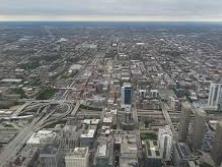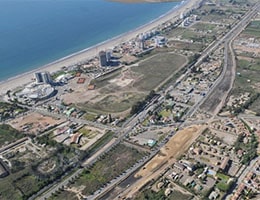 The English word conurbation came into our language as conurbation . It is the group formed by different urban centers that, at first, were independent, but due to their growth they ended up joining together .
The English word conurbation came into our language as conurbation . It is the group formed by different urban centers that, at first, were independent, but due to their growth they ended up joining together .
The term was coined by the botanist and biologist Patrick Geddes , born in Scotland in 1854, who is widely recognized for his innovative ideas in the fields of education and urban planning . In 1915 he spoke for the first time about this concept in his book Evolving Cities , creating a description of the growth of several cities looking at them as a whole.
In any case, the meaning that Geddes originally gave to the term conurbation is closer to the idea of expansion of a city in general, and not so much to the fusion, so to speak, to which he currently refers in the areas of urban planning and geography .
For a conurbation to develop, there must be several towns or cities located close to each other. Due to new constructions and population growth, these towns expand their surface until the boundaries disappear and join together: it is difficult to establish where one town ends and the other begins. Conurbation, however, does not always imply physical contiguity.
Although it is not a requirement that built spaces be located continuously, roads are usually created to connect the suburban areas of each city. In this way, when we talk about conurbation we refer to regions that generally cover several hundred square kilometers.
It is common that, in a conurbation, each member maintains its administrative independence . Many times the cities that make up a conurbation have a center , different neighborhoods and a periphery that are their own, beyond being part of a larger group.
The identity of each component of a conurbation is maintained at several levels, such as the characteristics of its social groups, its suburban spaces, its culture, its economic resources and the activities that pursue investment plans for its development.
 Greater Buenos Aires , also known as the Buenos Aires suburbs , is an example of a conurbation that occurred in Argentina . The various parties surrounding the City of Buenos Aires or located near it, such as Florencio Varela , General San Martín , Lomas de Zamora , Avellaneda and San Isidro , forged a union. In this conurbation several cords are usually distinguished: successive rings that are located according to their proximity to the City of Buenos Aires . The towns closest to the City of Buenos Aires make up the first cordon of the Buenos Aires suburbs.
Greater Buenos Aires , also known as the Buenos Aires suburbs , is an example of a conurbation that occurred in Argentina . The various parties surrounding the City of Buenos Aires or located near it, such as Florencio Varela , General San Martín , Lomas de Zamora , Avellaneda and San Isidro , forged a union. In this conurbation several cords are usually distinguished: successive rings that are located according to their proximity to the City of Buenos Aires . The towns closest to the City of Buenos Aires make up the first cordon of the Buenos Aires suburbs.
In Uruguay , for its part, there is the Maldonado – Punta del Este conurbation . These cities used to maintain a geographical and cultural distance but, over the years, they progressively joined together.
It is important to differentiate conurbation from urban agglomeration , a phenomenon that consists of a city expanding and "absorbing" neighboring centers, turning them into suburban areas that are part of a whole in which there is a single organization of space. In short, agglomeration does require spatial continuity and does not admit independence of functions.
Broadly speaking, three types of conurbation are distinguished: in the first we find those that arise from a regional process that is associated with the development of the industry , where the different cities participate in the transformation; the second is related to the rural crisis and urban growth; The third arises when a city acquires enough power to dominate those in its vicinity.
